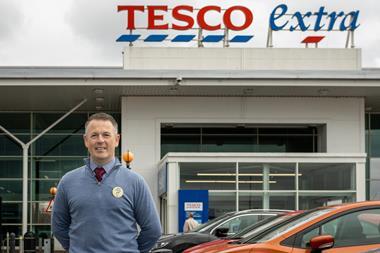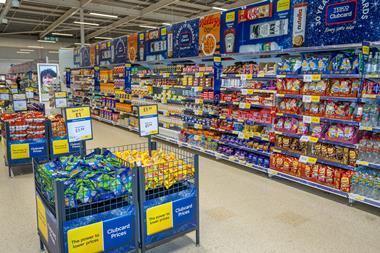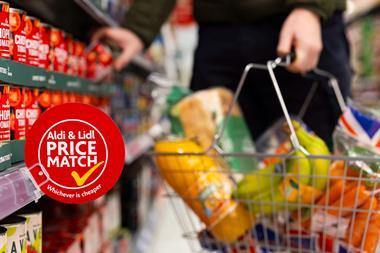
Supermarket shrinkage chiefs fear TikTok-organised looting sprees – like the one witnessed in Oxford Street last week – are headed for grocery stores.
Social media-organised criminal flashmobs were noted as one of the 10 drivers of soaring grocery retail losses, which are up by a third compared with before the pandemic, according to loss leaders at the major UK supermarkets.
The expectation is such looting will inspire “copycat behaviour” in supermarkets, the ECR Retail Loss research session suggested.
“There are influencers now going in to stores and trashing them,” Professor Adrian Beck, who led the benchmarking research session, told The Grocer. “Other people are going in and blatantly stealing – videos shared by the retailers themselves or other customers – filling bin liners full of stock and nobody stopping them. That sort of message spreads so much faster now.”
Compared with 2019, losses at the major supermarkets were up by 33%, the ECR Retail Loss research found. For some grocery retailers, losses were up by 50%.
“These are big numbers,” said Beck. “These levels of loss across the grocery sector are something we haven’t seen for an awfully long time. It’s unusual to see such a large increase in a short period of time.”
Thefts were happening across all categories – beyond the more commonly stolen beauty and booze – the report found.
Last month, Co-op reported record levels of theft and antisocial behaviour during the past six months, which had become “out of control”. One London store, the retailer said, had been “looted” three times in one day.
The ECR Retail Loss research identified several other drivers of the shocking rise in theft. Among them were violent criminal gangs seeing supermarkets as “low risk, high reward” targets, a lack of police support and court backlogs meaning perpetrators frequently avoided punishment, and retailer policies of non-engagement with thieves.
“Supermarkets are extremely concerned and anxious about making sure their staff don’t get hurt or injured. And so most are now developing a policy of completely hands off in these circumstances,” Beck said. “Which is completely understandable but the downside of that is for those who are committing the crime is it sends a clear message there is no risk, there is no consequence.”
“If I’m a regular committed offender and I see staff will not touch me, guess what I’m coming tomorrow and the day after and the day after,” he added.
A new law that made attacking a shopworker an aggravated offence came into force last summer. However, a Freedom of Information request by Co-op showed police failed to respond 71% of the time.
Meanwhile, the Crime & Disorder Act classifies circumstances where the value of stolen goods does not exceed £200 as “low-value shoplifting”, which is a summary offence. Prime minister Rishi Sunak this week called the Oxford Street looting “appalling” and “unacceptable”, warning those involved in future criminal flashmobs would be “met with the full force of the law”.
As well as the cost of living crisis driving more people to steal everyday items, store design was also blamed for the rise in theft. More open-plan store designs and lack of checkout barriers made theft and looting “easier to do and harder to stop” Beck said.
The shift towards self-checkouts – and the lack of enough staff to monitor them – had also led to a rise in opportunistic theft, the loss leaders said.
“You can have an event like the one on Oxford Street where they may steal £5,000 worth of goods in one go, but in a big Tesco, you might have 5,000 people stealing a £1 of product that day.
“The P&L is impacted just the same. One is generating profoundly dramatic footage, which ends up in the news, the other doesn’t,” Beck said. “It’s much more low scale and insidious, but you’ve got a larger population of your customers able to do it. Death by a thousand cuts.”
Beck said grocers were putting money, technology and attention towards reducing the growing loss issue.
“You can’t have these levels of increase for very long,” Beck said.



















No comments yet